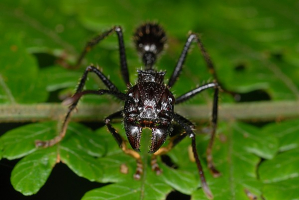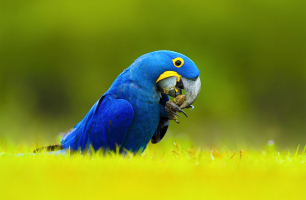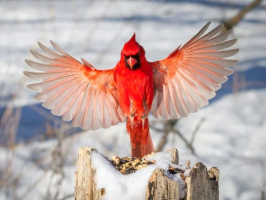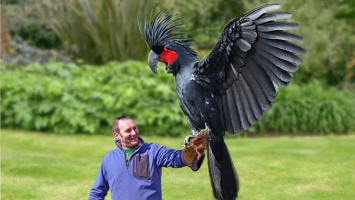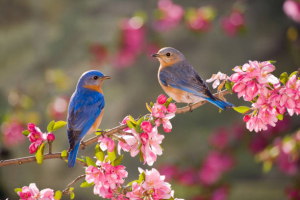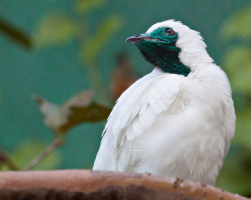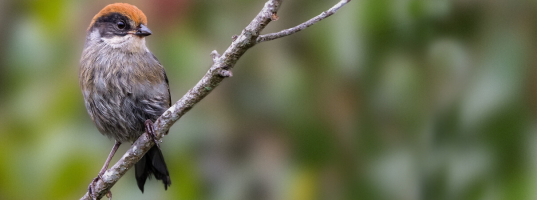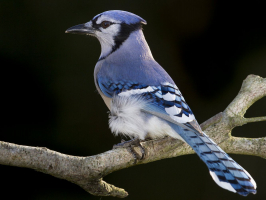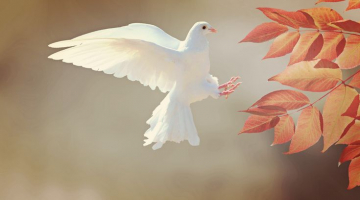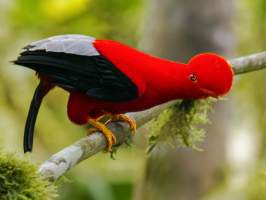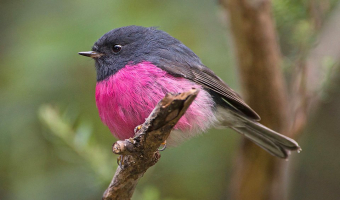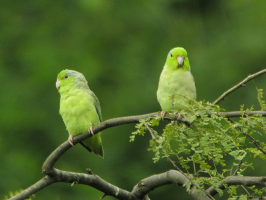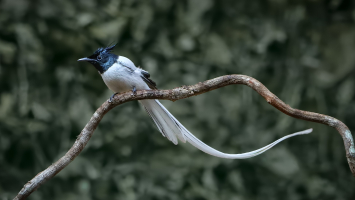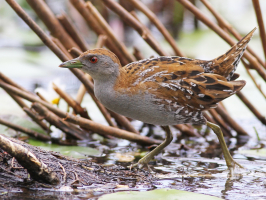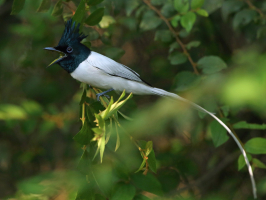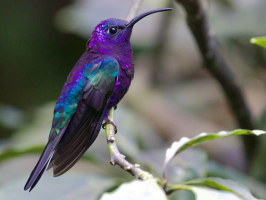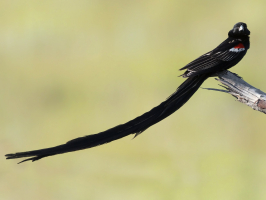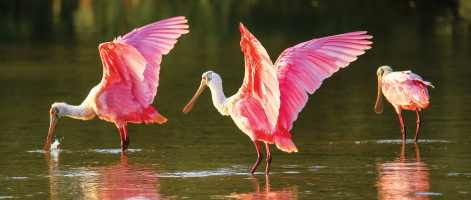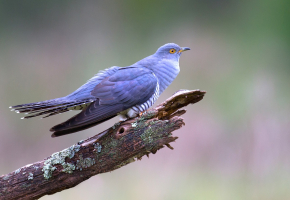Top 10 Fascinating Amazon Rainforest Birds
The Amazon Rainforest is home to some of the world's most beautiful and unique birds. Over 1,300 different bird species are thought to exist in this area, ... read more...nearly 30 of which are endemic, meaning they can only be found in the Amazon Rainforest. The majority of the birds live in the canopy of the rainforest and you would be truly amazed at the different colors, shapes, and sizes they come in. Here is a list of the most fascinating Amazon Rainforest birds, let's find out!
-
Hyacinth Macaws are the largest flying parrot species in the world, measuring an astonishing 100 cm in length. They live in both the Pantanal and Amazon Basin regions of Brazil. Over the past few years, their population has decreased. Less than 5000 Hyacinth Macaws are still alive today. The two biggest dangers to hyacinth macaws are habitat loss and hunting.
The Hyacinth Macaw is renowned for its huge size as well as its beautiful azure blue plumage and vivid yellow eye-rings. Hyacinth Macaws are often known as "blue macaws" because of their magnificent coloration. It is considered to be one of the most beautiful birds of the Amazon. Additionally, they have a stunning long tail and a powerful, curved black bill. Hyacinth Macaws could make wonderful pets with the right training. You should also offer them a lot of space to ensure their comfort. They are exceedingly silly and not as proficient at mimicking speech as some other Macaw family members.
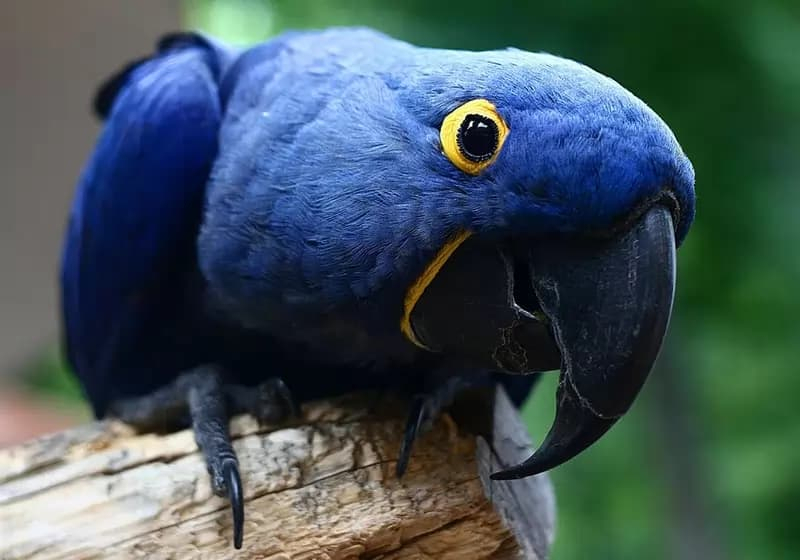
SUNIRA WIKIMEDIA 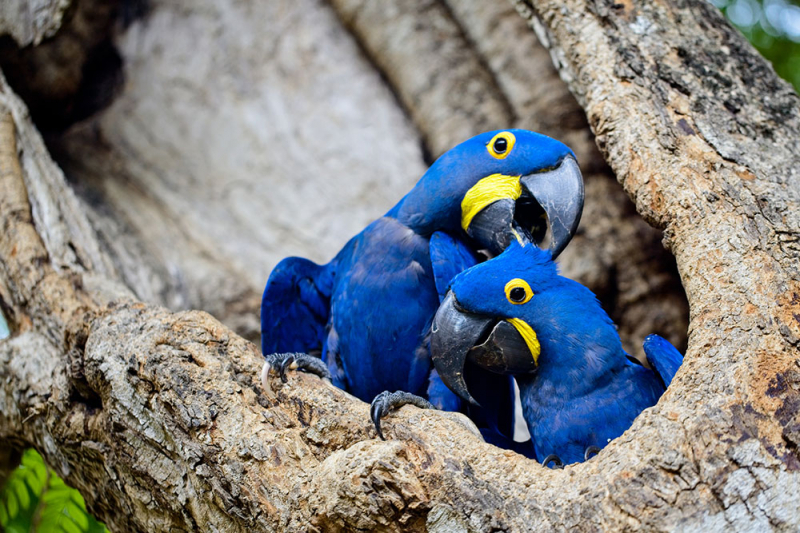
Animal of Things -
The Blue-and-Yellow Macaw (Ara ararauna), also known as the blue-and-gold macaw, is a large South American parrot. It is a member of a large group of neotropical parrots known as macaws. It can be found in areas of the Amazon basin where large Mauritia palm stands grow. The macaws are exclusively linked with this species of a palm tree, feeding mostly on its nutritious "dates" and using the dead palm tree cavities as colonial nesting sites.
These birds are among the bigger members of their family, growing to a length of 76-86 cm and a weight of 0.900-1.5 kg. They have beautiful aqua blue feathers on the top of their bodies, with the exception of their head, which is lime green. However, the bottom has a gorgeous deep yellow/light orange color. The feathers under their chin and their beak are also black. With the exception of black talons, its feet are gray in hue. The bird has white skin, and the only feathers on its face are a few sparse black ones that make a striped pattern around its eyes when they are separated from one another. Irises are a light yellow color.
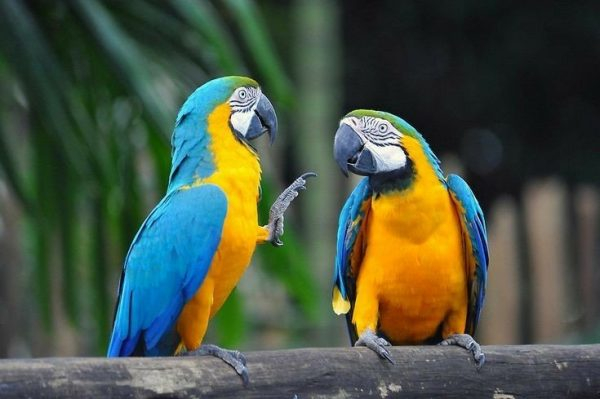
Animal Spot 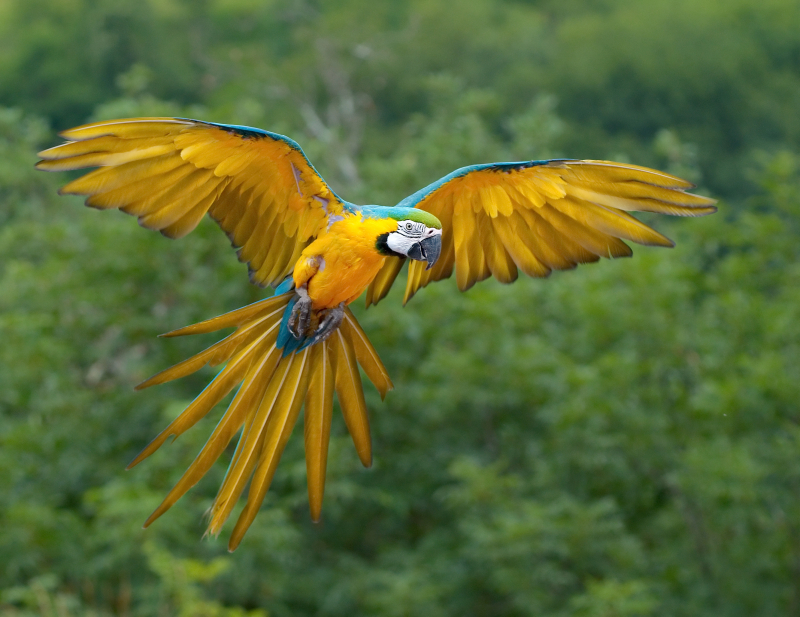
Animal Corner -
One of the largest and most beautiful members of the macaw family is the Scarlet Macaw. They live in the tropical humid environments of the Amazon Rainforest. They are renowned for having vibrant plumage, blue backs and brilliant red fronts, and yellow upper wings with green edges. Another distinguishing characteristic of a scarlet macaw is its powerful, curled beak. The tip is black, while the upper section is white. An adult scarlet macaw measures 80 to 90 cm in length and can weigh up to 1.5 kg. They fly quite well and may go at speeds of up to 35 mph. Scarlet macaws have a longer lifespan as well. These animals have a lifespan of 40-50 years. It is said to be that scarlet macaws in captivity can live up to 75 years.
The magnificent, scarlet macaw is also among the most intelligent birds in the world. They are easily taught language, sounds, and tricks while kept in captivity. A well-trained scarlet macaw is claimed to be able to recognize both colors and shapes. Scarlet macaws are boisterous parrots as well. They have a variety of vocalizations, including screeches and squawks. Their primary food sources include insects, fruits, seeds, and nuts. Scarlet macaws have a powerful, curved beak that can readily crush any nuts.
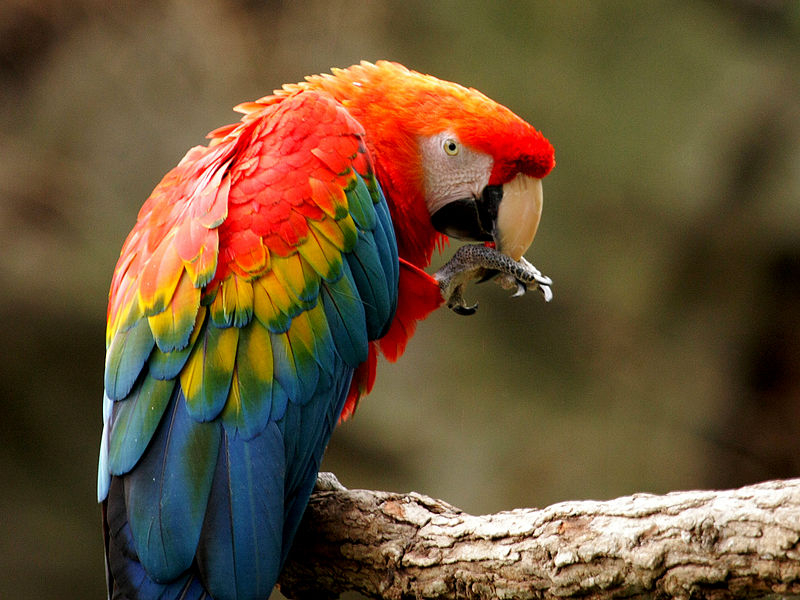
Rainforest Animals 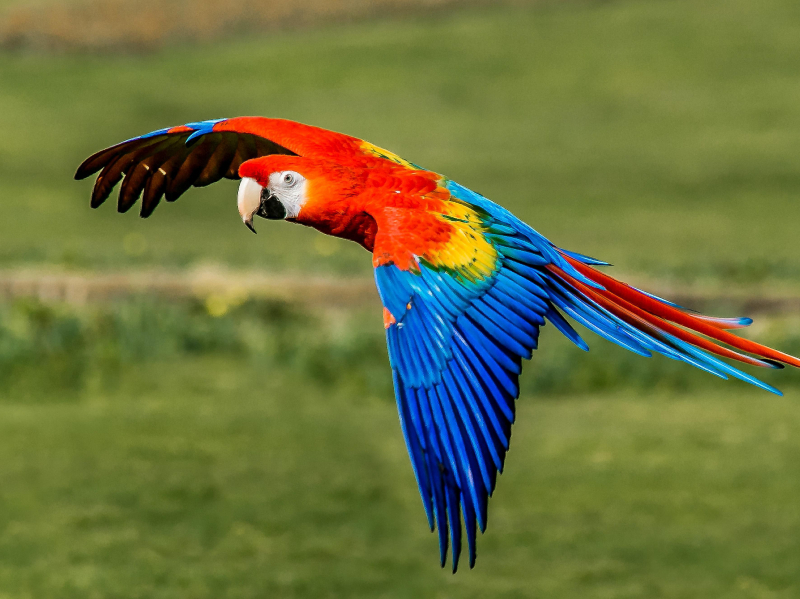
eBird -
The Hoatzin is among the strangest-looking birds in the world because it appears to have been put together from leftover parts of half a dozen different bird species. It is an unruly collection of hues and patterns that may be found in the depths of the Amazon, along with talons that protrude from their front limbs. But there's no need to be alarmed if that sounds frightening. The Hoatzin is a very ungainly bird because of its haphazard combination of traits.
Despite having the ability to fly, the Hoatzin has poor air performance, hence the greatest escape method they have found for their young is to roll out of the nest and into the water when a predator approaches. The stink of this incredibly strange bird, though, is what stands out the most. It has acquired the nickname "Stinkbird" due to its distinctive manure-like stink. One of the stinkiest animals in the world, according to popular opinion.
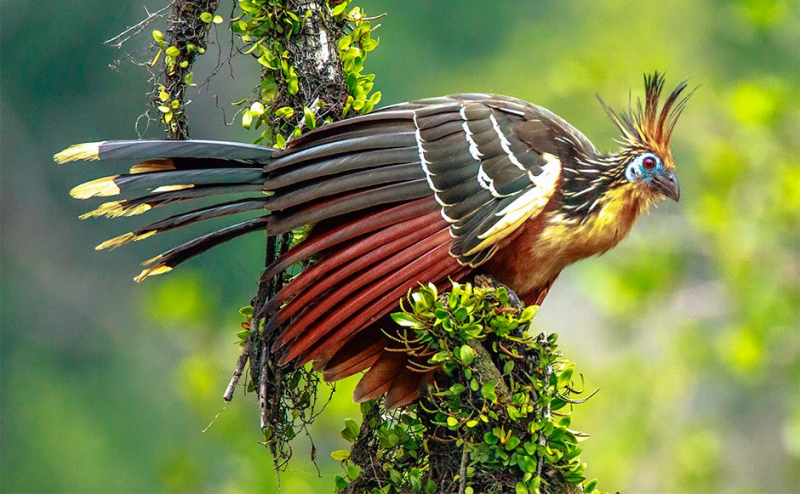
Wild Latitudes 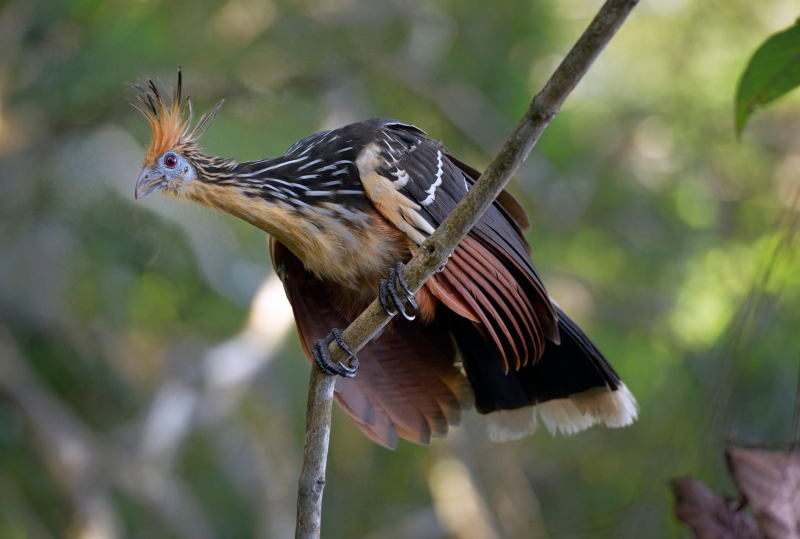
Discover Wildlife -
The King Vulture (Sarcoramphus papa) is a large bird found in Central and South America. It is a member of the new world vulture family Cathartidae. The primary habitat of this vulture is tropical lowland forests, which extend from southern Mexico to northern Argentina. Although there are known fossil members of the genus Sarcoramphus, it is the only living member.
The king vulture is a large bird that is primarily white, with gray to black feathers on its ruff, wings, and tail. The skin color ranges from yellow to orange to blue to purple to red, and the head and neck are bald. The orange fleshy caruncle on the king vulture's beak is quite visible. Being a scavenger, this vulture frequently makes the first incision into a live cadaver. Additionally, it drives away smaller new world vulture species from a cadaver. King vultures have been reported to survive up to 30 years in captivity. King vultures were well-liked characters in both local mythology and medicine, as well as the Mayan codices. Despite being classified as Least Concern by the IUCN, they are becoming less common, mostly as a result of habitat degradation.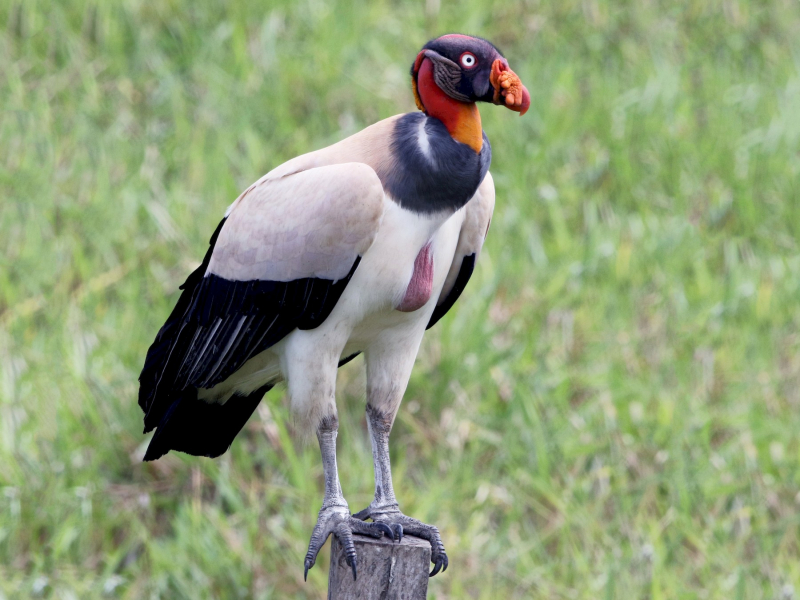
eBird 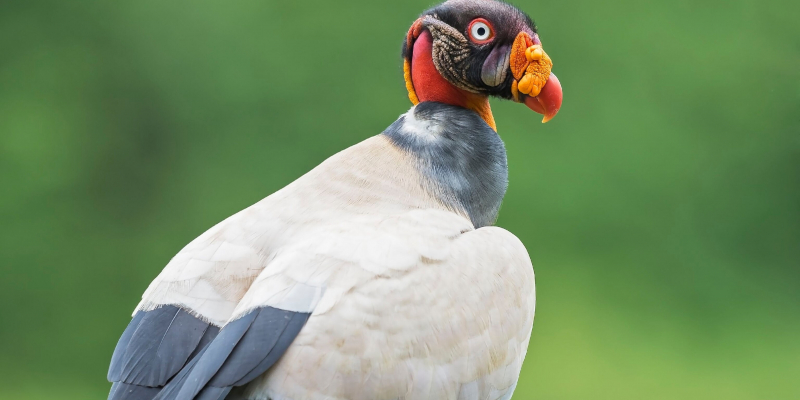
National Geographic -
The Amazon Kingfisher (Chloroceryle amazona) is a resident breeding kingfisher in the lowlands of the American tropics from southern Mexico south through Central America to northern Argentina. The Amazon kingfisher is similar to the green kingfisher, whose range it shares, although it is larger and three to four times heavier than the related. It is 30 cm long and weighs between 98 and 140 g. It has a short tail and a large bill, which are characteristics of kingfishers. It has an oily green exterior and a white collar around its neck, as well as a shaggy crest. It doesn't have the green kingfisher's white wing markings.
With the exception of a wide chestnut breast band and a few green streaks on the flanks, males have white underparts. Females have white underparts with green streaks and patches on the side of the chest. Young birds have white patches on their wings but seem similar to adult females. These birds often give a harsh teck call. The rarely heard song, given from a tree top, is a whistled see see see see.
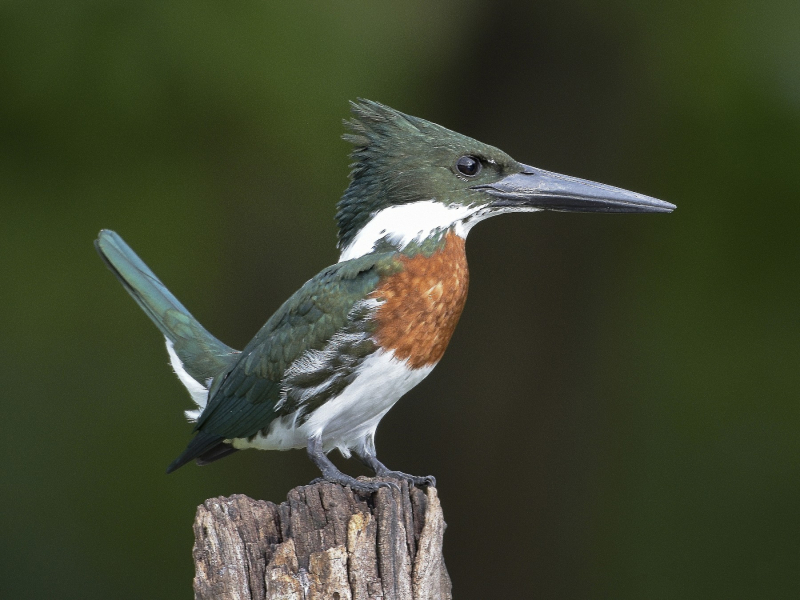
eBird 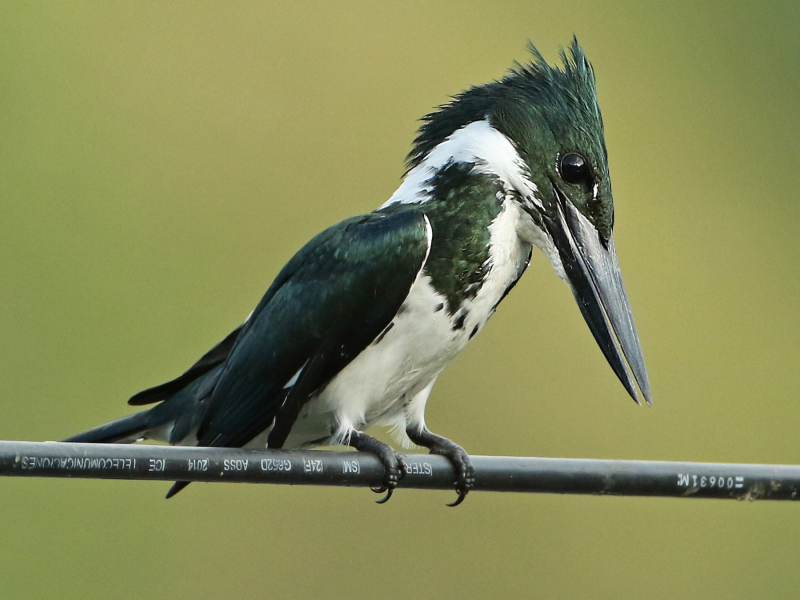
eBird -
The Crimson Topaz (Topaza pella) is a species of hummingbird in the family Trochilidae. It is a resident (non-migratory) South American hummingbird that occurs naturally in Amazonian Brazil to the south of the Amazon river, in southern Venezuela, and the Guianas. This charming hummingbird is one of the birds of the Amazon with stunning rich feathers, a glittering green throat, and scythe-like tail streamers. Both have a bill that is straight to slightly bent. The male's head, face, and neck sides are all velvety black in color. On the upper tail coverts, its back is iridescent in shades of scarlet to gold. Two of the outside, chestnut tail feathers are extended and crossed. The central tail feathers are bronzy green. The underparts are bright red, and the throat is a golden green color with a black ring around it.
The crimson topaz's song is an "irregular series of chattering 'chip' notes given almost continually (other than breaks to feed) throughout the day". It often sings from a perch in the canopy and may make short flights out and back to the same perch between songs. Even though the crimson topaz's population has not been counted and is thought to be declining, the IUCN has classified it as being of Least Concern. It is regarded as rare to locally frequent, however, because of its treetop habits, there may be an undercount.
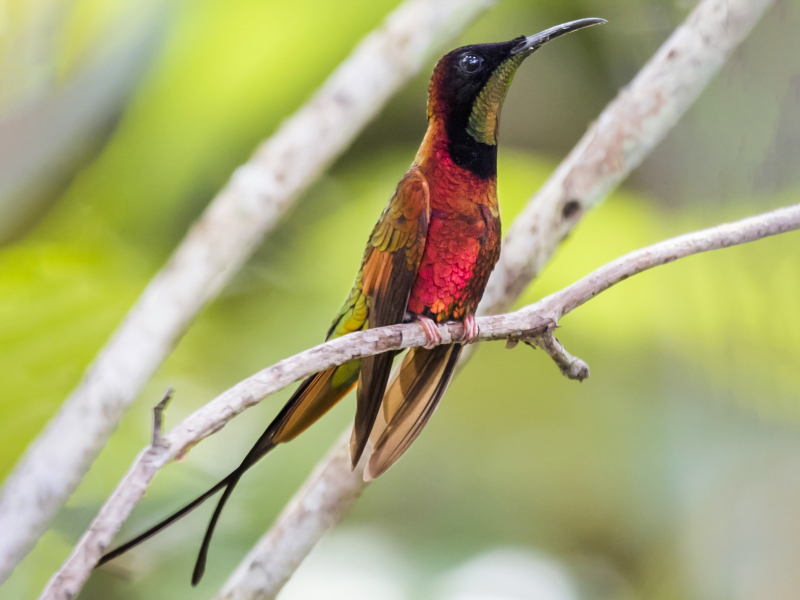
eBird 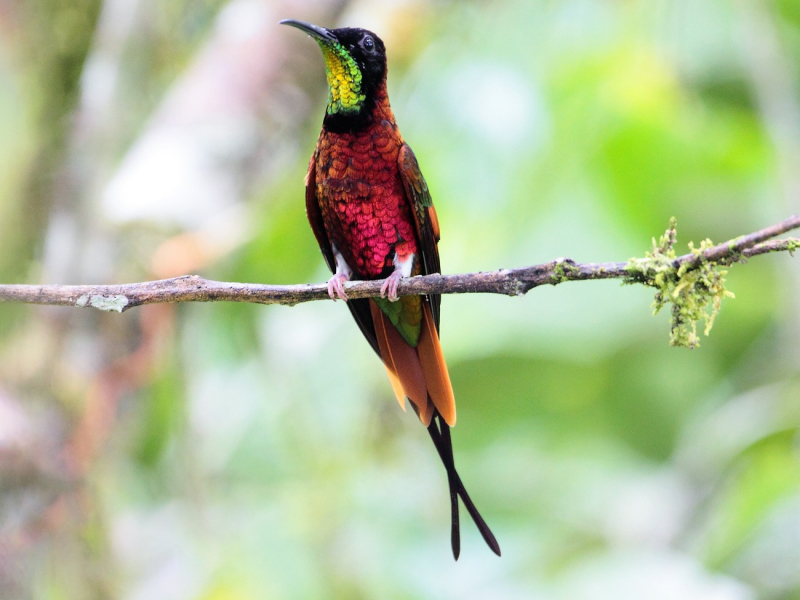
eBird -
The Laughing Falcon (Herpetotheres cachinnans), also called the snake hawk (erroneously, since it is not a hawk), is a medium-sized bird of prey in the falcon family (Falconidae), the only member of the genus Herpetotheres. It can be found throughout much of Brazil, northern Argentina, and Paraguay, as well as Central and South America south to the Peruvian and Bolivian Amazon regions, and at altitudes up to 1,500 m, though it is frequently absent from mountainous areas.
Adults have a light buff head that can vary in color from brownish to almost white depending on individual variance and feather wear. The wide black face mask forms a narrow collar around the neck and is edged with white. The dark feather shafts on the crown give the fabric a slightly streaked appearance. The rear and upper wings have a dark brown color. The rectrices are barred black and whitish, ending in white, and the upper tail coverts are once again whitish buff. The underside is consistently pale buff, with the possible exception of some black speckling on the thighs. The underside of the wing is a light rufous-buff color, with some underwing coverts occasionally showing dark marking.
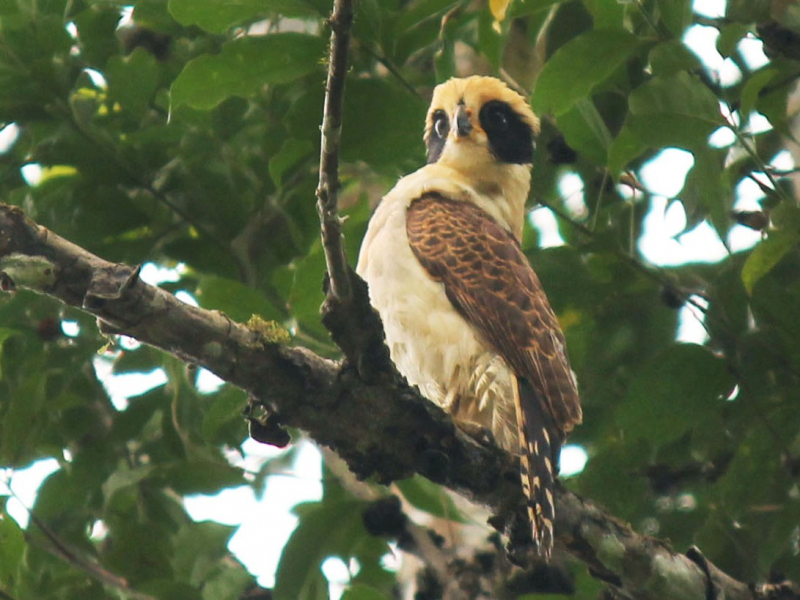
eBird 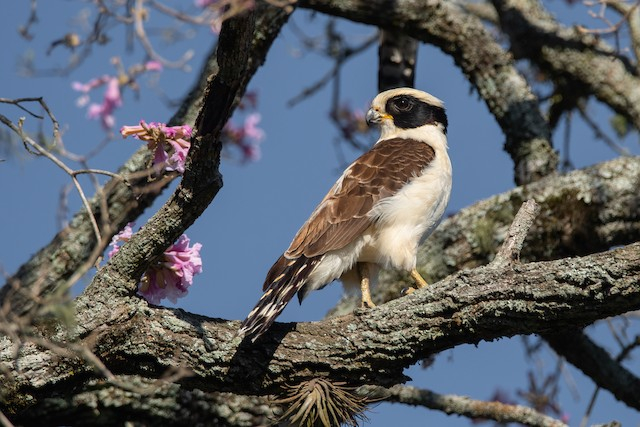
eBird -
Spix's Guan (Penelope jacquacu) is a species of bird in the family Cracidae. Spix's guan is found in the upper Orinoco River and western Amazon River basins of Bolivia, Brazil, Colombia, Ecuador, Guyana, Peru, Suriname, and Venezuela. The weight and plumage of the four Spix's guan subspecies vary, and there are intergrades between them. They measure 66–76 cm in length. The P. j. jacquacu male and female weigh 1.24-1.36 kg and 1.14 kg, respectively. The nominated subspecies are brilliant scarlet below and bronzy olive-green above. Grant's is significantly darker; the crimson bottom is dark and the upper portions have a blue-green shine.
Typically foraging from the center to the tops of trees, but occasionally on the ground, Spix's guan forages alone or in small family groups. Although it has also been recorded to follow army ants to consume arthropods, its major food sources are fruits and seeds. Spix's guan is considered to be of Least Concern by the IUCN. Its estimated 5.9 million km² global range encompasses areas where it is widespread, at least in some areas. Although the exact population is unclear, it is believed to be declining.
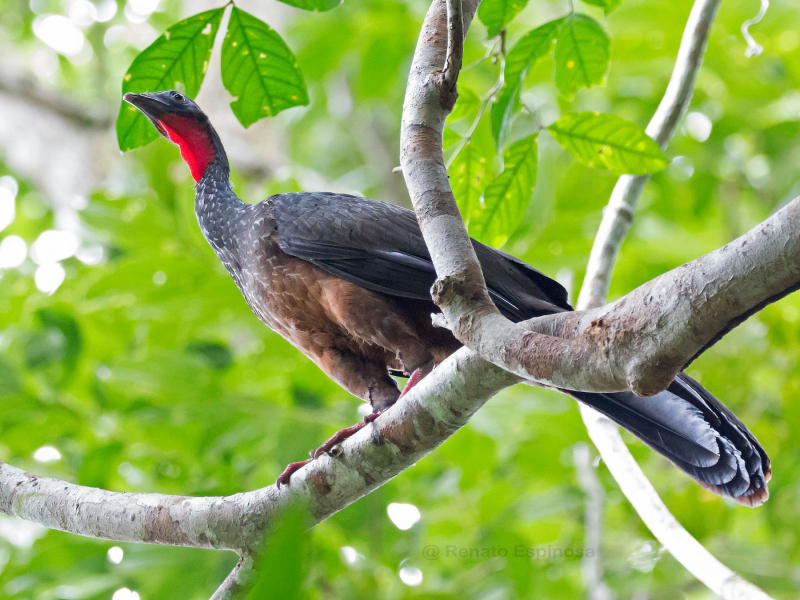
eBird 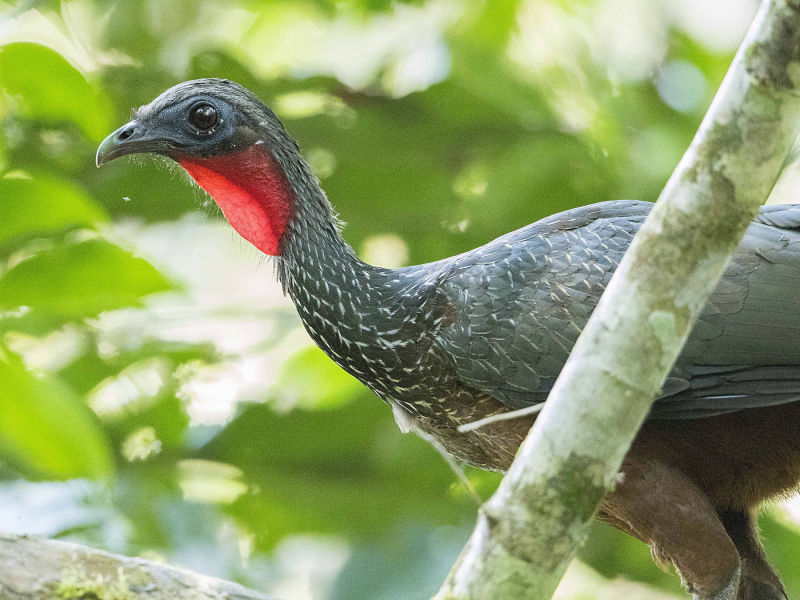
eBird -
The Great Potoos (Nyctibius grandis) is a noisy, strange-looking bird that can be found in the canopy of the Amazon rainforest. This species is nocturnal, much like owls. It hunts huge insects and tiny vertebrates, catching them in sallies while perched high up. The great potoo's distinctive groaning growl, which it vocalizes throughout the night, maybe its most well-known feature. With its nocturnal sounds, it creates an ominous atmosphere in the Neotropics.
The head of the huge potoo is larger than its body. The beak is small but broad, and the eyes, which have a brown to yellow iris, are also very large. Their tail is lengthened, and their wings are elliptical in shape. White, gray, black, and burgundy are some of the different feather hues. With the exception of white stripes that may be seen running across the tail laterally, the colors of the tail mirror those of the rest of the body. They typically can be found perching or nesting during the daytime in large trees, usually more than 12 meters above the ground. They typically perch on branches that are between 20 and 30 centimeters in diameter. They may descend to perches 1.5 meters below the earth at night to prey from there.
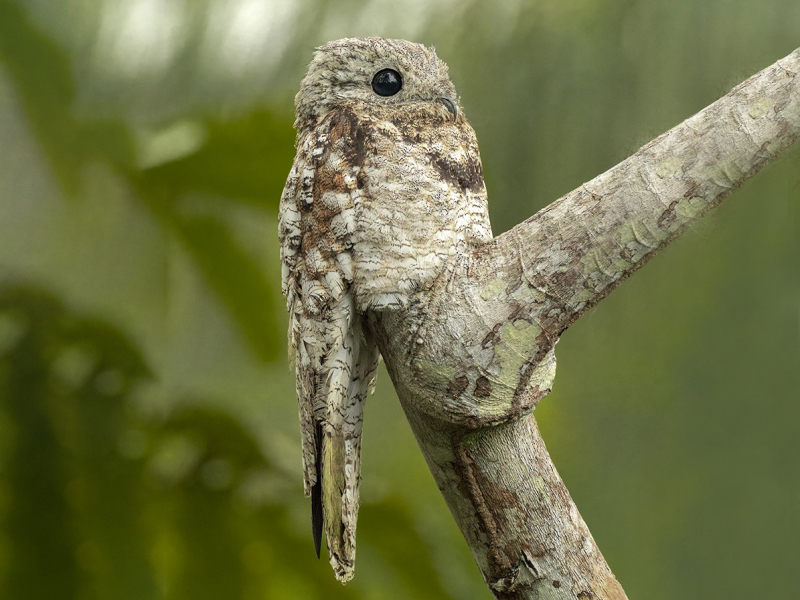
eBird 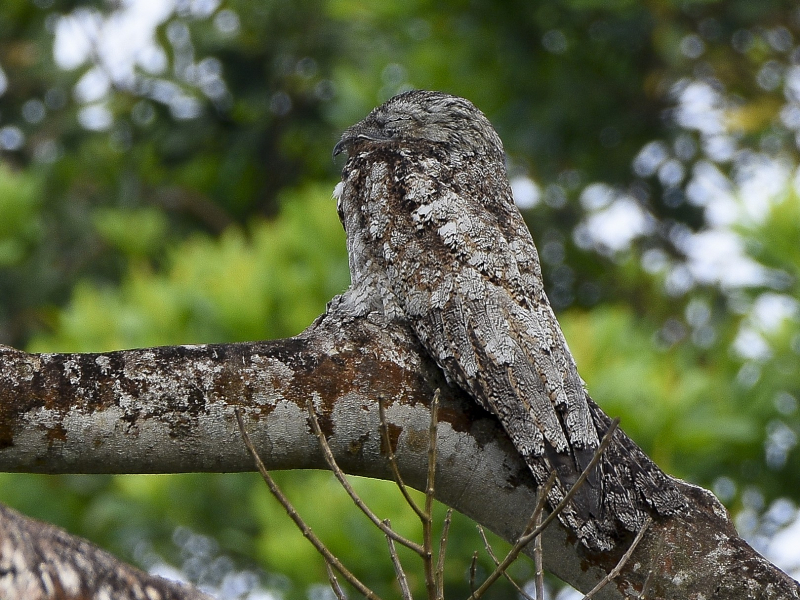
eBird












